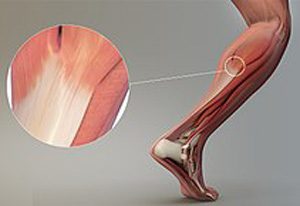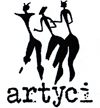 Written by_ Zuna Vesan 2017
Written by_ Zuna Vesan 2017
Translated by_Žubra Žubretovská 2021
Extract from the upcoming book TAO OF MOVEMENT
… So far, there has been talk of movement of Qi, which may sound too abstract. Even the movement of emotions, or the way to realize one’s visions, is indeed an abstract depiction of movement. However, the functional circuit of the liver is also in charge of the physical movement of our body and this is done through the tendons. The liver nourishes the tendons with its Qi and blood, thus ensuring the body’s mobility, elasticity and softness. Let’s go back to the idea of WOOD – a young TREE. Its body is soft, supple, full of vitality. When we lean on it, it elastically takes on our weight. When we bend the branch, it does not break, but adapts. And when we release it, it’ll come back. So should our tendons, and by caring for them through caring for liver Qi, we can maintain the quality of the tendons.
It could be assumed that movers naturally sufficiently protect their tendons. I do not dare to generalize, but in my view it is not so. It is true that warm-ups before training are a preparation of the tendons for exercise, and that if the tendon hurts, we apply some healing ointment. However, we do not know much about the prevention of tendon health. We begin to be really interested in them only when they hurt us, when we injure them, or when we observe that we have them contracted and that it is hard to loosen them up. We are only taught to use our body yet we pay little attention to it. We take surgery for granted, although somewhere in the depths we feel that this is probably not quite right. A tendon injury can interrupt our dance career for a long time, and in extreme cases it can completely suspend it. I do not think any mover wants that. Unfortunately, few teachers or trainers teach us how to take care of our tendons as well as the whole body. Chinese medicine has brought me many possibilities into this gap of prevention. It does not only teach me what ointment to apply to the sore tendon, or which orthopedist to look for, it teaches me how to take care of the tendons preventively from the basis so that there is minimal problem and maximum benefit.
Moreover, we are not used to consciously using the tendons when moving, and thus we do not use their real possibilities. We tend to manifest our physical strength with large muscles, which we think are also strong and capable of great performance. This western-oriented notion of strength is often not true, a musculine man can easily be overcome by a more fragile-looking individual, who can work more with the energy of bones and tendons. In dance, especially in partner work and contact improvisation, when often looking at how a relatively fragile woman lifts or shifts a man’s weight, we encounter evidence that muscle strength is not decisive, often even less effective. If we use muscles to lift our partner’s weight, we get them tired much faster than if we transferred the weight through the tendons to the skeletal structure and from there transformed it into the ground or space. The Taoist approach to the body teaches us that if we want to be truly physically strong, that is, strong in terms of flexibility and a kind of motor intelligence, we also need to pay attention to tendons in our practice. When we focus on muscle work, tendons remain unused, do not develop, and remain weak. According to the experience of taoists, healthy, nourished and strengthened tendons are essential for the development of physical strength and bodily comfort.
Tendons and ligaments are a type of connective tissue. Tendons connect bones to muscles, ligaments connect bones to bones. The ligaments are located at greater depths, especially between the bones and are usually short. Conversely, tendons can be very long and can run along several bones and on different parts of the body. We can imagine them as extremely strong rubbers. They are elastic, which allows them to stretch and contract again. In order to maintain their flexibility, it requires paying attention to them through diet, proper preparation for performances, regeneration by relaxation, but also various Qigong exercises. Even the degree of mental resilience is reflected in the condition of the tendons. Tendons are essentially responsible for the mobility of the body, so they are extremely important for the mover. They contract and relax the muscles, thus moving the bones and joints, ie the body as a whole. From the point of view of Chinese medicine, the condition of tendons and ligaments is subordinated to the nutrition of the liver, because they receive Qi and blood from it. The liver is responsible for movement, contraction and relaxation, and therefore contraction and release of muscles and tendons. The „vehicle“ of Qi for body movement is blood. The liver stores blood and distributes it to all parts of the body as needed. During the rest period, blood is collected in the liver, released during the activity and sent to those parts of the body that are most involved in the activity. The liver therefore also supplies the tendons and ligaments with blood, thus controlling their quality. The quality of liver Qi is very important for tendons, because this Qi nourishes the blood, which then nourishes the tendons. Without this nutrition, the body loses its flexibility. If the liver is in good condition, it also affects the quality of its blood, and then the tendons, ligaments and membranes are sufficiently nourished. This is reflected in their strength, but also flexibility, suppleness and sufficient moisture. This condition provides the body with active mobility, which is characterized by health and vitality in the tendons, then in the muscles and throughout the body. Conversely, if the liver and its blood are in a state of energy deficit, this also affects the condition and function of the tendons. For example, if the liver does not have enough of its qualitative blood, the tendons and ligaments do not get the necessary nutrition. Then the body loses its flexibility, the muscles the ability to stretch and contract. This manifests itself in all sorts of problems with tendons, membranes and ligaments. There is weakness, woodiness or fragility of the limbs, tremors in the muscles, shaking of the limbs, convulsions or up to convulsive seizures in the limbs. In extreme cases, it can be a paralysis of the limbs.
A young mover who works with the tendons on a daily basis does not yet feel these extreme limitations. The fact that it is more difficult for mover to warm up the tendons, or one feels a strong and prolonged tension after the training or after the performance, pain or tremor, or the tendons quickly stiffen and shorten even after a short pause, may warn that something worth thinking about is happening. Impaired state of liver Qi and blood will also affect joint mobility. The tendons are involved in the contraction and relaxation of muscles, and thus in the movement of bones and joints, ie the overall movement of the body. Since the liver has the task not only of contracting the muscles, but also of relaxing them, the imbalance can manifest itself in stiff neck or such a small detail as clenching the jaw.
In addition, Chinese medicine, which also includes Taoist Qigong exercises, has observed that the tendons sufficiently nourished by the liver are a source of resistance to fatigue. The vitality of movement depends on the good condition of the tendons, which help the body to achieve high motor performance and protect it from getting tired quickly. So it also depends on the intelligence with which we use the body in motion, hence the way when we do not use so much muscle energy, but on the contrary the energy of tendons. We can clarify this in a simple test. Hang on to a bar with bent arms, using the muscles of the arms. How long will you last? You will definitely feel tired after a short while and you will be forced to quit. However, when you hang on the bar with your arms outstretched, you can hang longer without feeling much effort. In this position of the arms, the force is transferred from the muscles to the tendons and then to the bones. This mechanism can be advantageously used in the mentioned dance partnerings and in contact improvisation. It saves energy and also ensures a smooth flow of energy between partners.
This is not to say that muscles should be forgotten and not involved at all. They do it themselves, at the stimulus of tendons. We can grow muscles in a relatively short time, but when we stop paying attention to them, they quickly weaken. Tendons can maintain strength throughout the live, and they can withstand much more until they are tired by physical exertion.
Tendon injuries and their treatment_read the article
Tendons and grace of movement_read here the article
Translation of this text is supported by Slovak Art Concil

